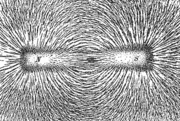by
Lynn Shapiro, Writer | March 27, 2009

Magnetic fields may
aid in blood treatment
Sepsis, an infection of the blood, can quickly overwhelm the body's defenses and is responsible for more than 200,000 deaths each year in the U.S. alone.
Premature newborns and people with weakened immune systems are especially vulnerable. Since most existing treatments are ineffective, researchers in the Vascular Biology Program at Children's Hospital in Boston have come up with a first line of defense--using magnetism to quickly pull pathogens out of the blood. (Children's hospital is affiliated with Harvard Medical School.)
The blood-cleansing device, developed by Chong Wing Yung, PhD, is described in the April 13 edition of the journal, Lab on a Chip.



Ad Statistics
Times Displayed: 172772
Times Visited: 3129 For those who need to move fast and expand clinical capabilities -- and would love new equipment -- the uCT 550 Advance offers a new fully configured 80-slice CT in up to 2 weeks with routine maintenance and parts and Software Upgrades for Life™ included.
The system Yung envisions will work like this: the patient's blood is drawn and tiny magnetic beads, pre-coated with antibodies against specific pathogens (such as the fungus Candida albicans) are added. The blood is then run through a microfluidic system in which two liquid flow streams run side by side, one containing blood, the other a saline-based collection fluid. The beads bind to the pathogens, and a magnet then pulls them (along with the pathogens) into the collection fluid, which is ultimately discarded, while the cleansed blood is reintroduced into the patient.
Tested with contaminated human blood, a device with four parallel collection modules achieved over 80 percent clearance of fungi in a single pass, at a flow rate and separation efficiency that would be viable for clinical applications. Yung estimates that a scaled-up system with hundreds of channels could cleanse the blood of an infant within several hours.

